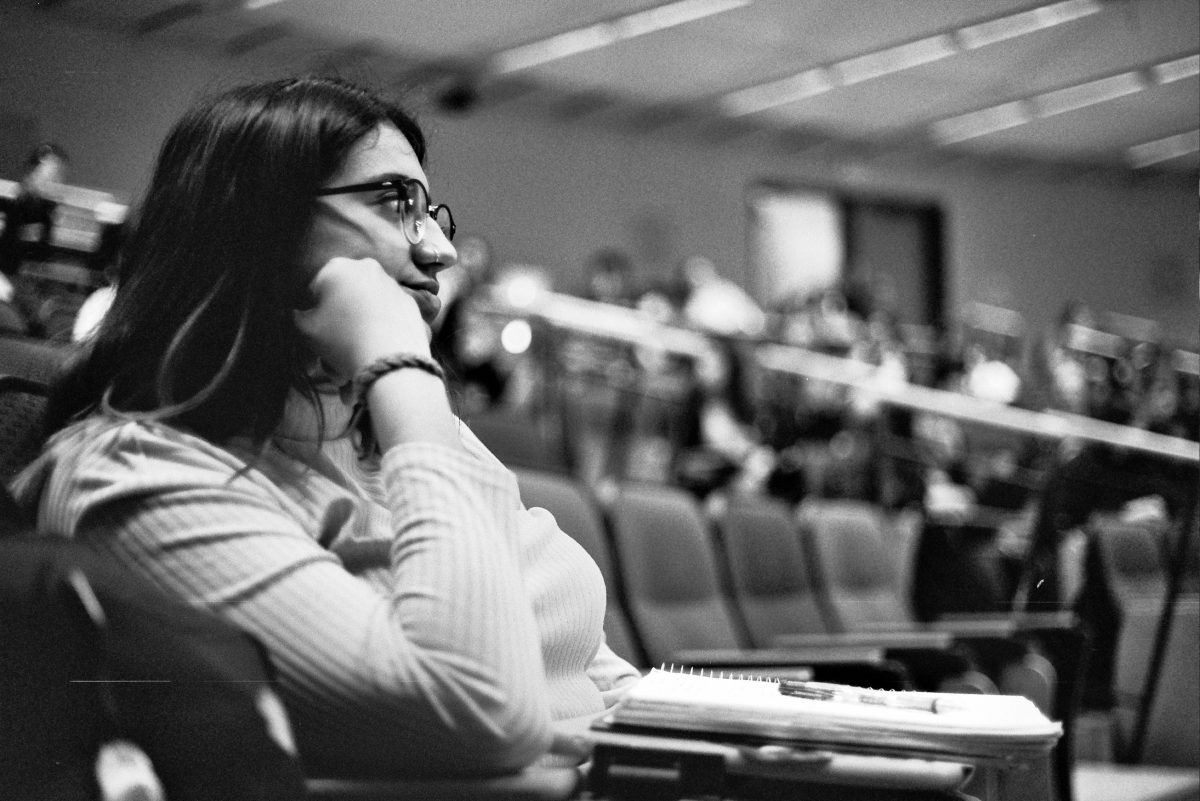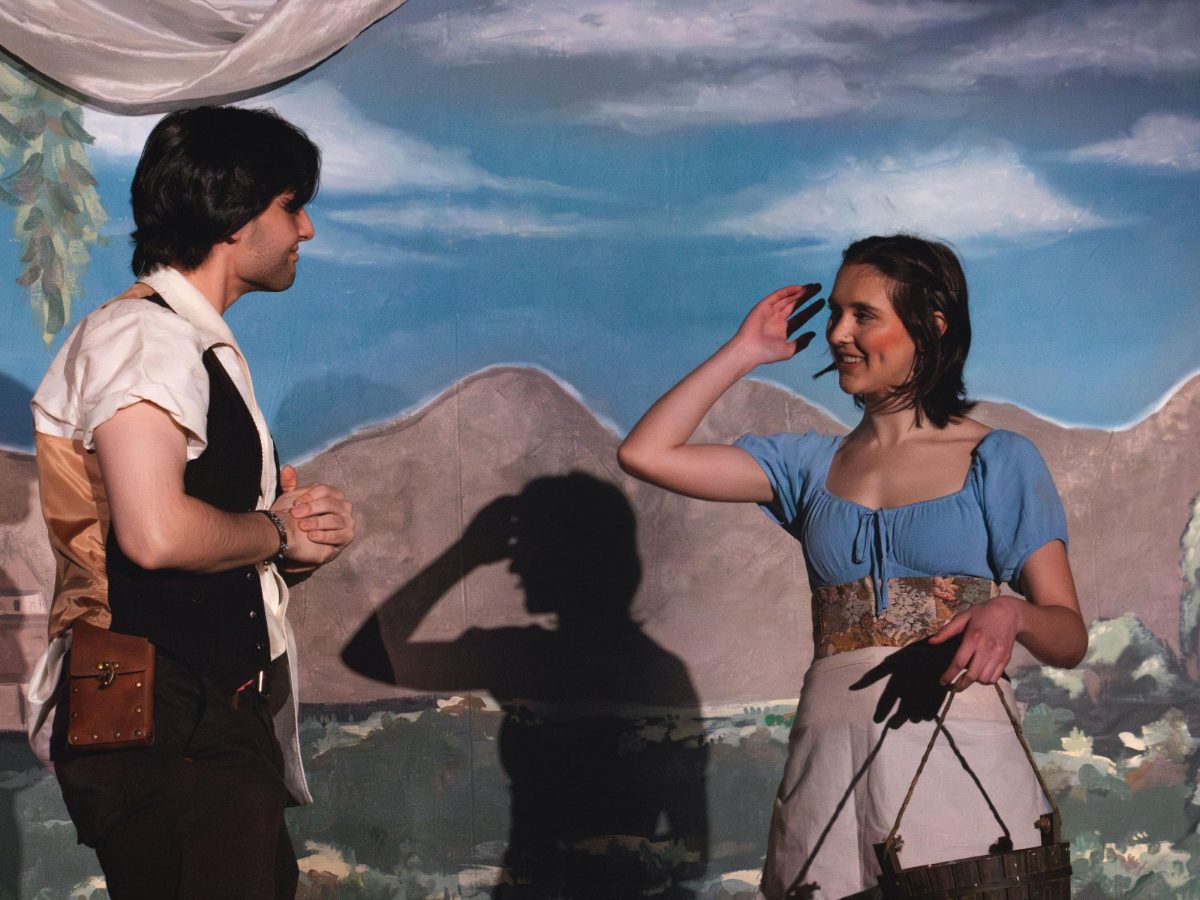The Veterans and Family Student Association is not an easy place to find. Enter the Erb Memorial Union on the ground floor from University Street and walk to the farthest corner in the back of the building. Take a left and continue down a lengthy hallway—past bathrooms, trash cans and utility closets. At the end of the hall is the main spot on campus for veteran students to connect with each other.
There are an estimated 300 to 400 students using Veterans Affairs benefits, says Zach Goodenough, a student veteran. To him, the UO lacks certain benefits for student veterans. He says both of the veteran centers at the community colleges he was at before had more resources in terms of space, study areas and computers. “As far as the University of Oregon being the flagship school of the state—and I’d probably throw it up there as one of the flagship schools of the West Coast, honestly—they’re really lacking in a lot of things that I thought to be standard for veterans,” Goodenough says.
Goodenough is one of the many student veterans working toward increasing the presence of veterans on campus and improving relations with non-veteran students. He was recently appointed Student Veteran Advocate in the Associated Students of the University of Oregon, but that position was eliminated by the newly appointed ASUO president Maria GallegosChacon.
Gallegos-Chacon declined a request for an interview, but said her team compressed the cabinet by combining former positions.
“Obviously, we will still be working on representing marginalized students, such as veterans, but not just through one role,” she said in an email.
However, the Veterans and Family Student Association, along with Maria Kalnbach, Coordinator of Nontraditional and Veteran Student Engagement and Success, have begun a Veterans Advisory Council. This council brings together student veterans as well as faculty and staff members who have served. The council creates goals for cultivating a community of veterans on campus and advocating for the student veteran experience. The council has only met once thus far, but plans to meet again in the summer and will have a subsequent one to two meetings per term. This collaboration is a push to improve the student veteran experience at the University of Oregon.
The VFSA and Kalnbach are also working to recruit more veterans to the UO. Anthony Whipple, a senior at the UO, served as a forward observer in the National Guard, meaning he targeted and is now in the Reserves. Whipple says that having more student veterans is beneficial to the university because veterans’ tuition is guaranteed through the G.I. Bill. The more veterans that come to the UO, the more money for the university. Whipple says improvements could be made starting with recruiting.
“The fact is that we’re missing out on all these benefits and this amount of money because we’re not actively recruiting veterans. We don’t visit military bases at all, as far as trying to recruit veterans in.” He says that some recruiters are focused on bringing in new traditional students from Southern California, which is next to a number of military bases. Part of a new recruiting strategy would be to stop by those bases to connect with people exiting the military who might be looking to attend a university.
To be sure, veteran students at the University of Oregon are not alone in the sentiment that there is not enough being done to close the divide between veteran students and non-veteran students. This is a small piece in a larger trend of a changing military and nation. A 2011 Pew Research Center report found that only one half of one percent of the U.S. population has been on active military duty during the last 10 years of war. The same survey also found that a large majority of post-9/11 veterans said the public “does not understand the problems faced by those in the military or their families.”
Similarly, Kalnbach says that one of the biggest hurdles student veterans face is being understood. This is due to common misperceptions about veterans.
“We have a very, very small percentage of people serving in the military—so most people nowadays don’t have a connection to a veteran,” she says.
A separate Pew Research Center report from 2013 concluded that this divide could be attributed to the elimination of the draft after the Vietnam War. Students today may not have a familiar connection with a person who has served in the military. In 2011, a majority of adults 50 and older said they had a member of their immediate family serve in the military. About half of people aged 30 to 49 shared that sentiment, yet only 33 percent of adults under 29 could say the same.
These kinds of shifts are resulting in a public that is less familiar with the military. Kalnbach says, “They have this misperception that if you’re serving in the military you’re serving on the front lines—you’re doing war-type frontline duty, which is so not the case. There are so many other jobs in the military.” Or, she says people have a certain image in their head of what a veteran looks like that doesn’t align with the minorities, women and transgender people who also serve.
Whipple says that one thing he wishes other students would understand is that veterans are normal people.
“I always feel like there’s a stigma around the military like, ‘Oh, they’ve done something heroic,’ either that or the polar opposite: ‘They’re terrible people,’” he said. “But I mean half the people that have been in—they were radio technicians or they were linguists. Their job never involved weapons and they just did their job, but they also like football and they like to drink on the weekends, you know?”
Whipple says he had trouble transitioning back to civilian life after his time in the National Guard, and that he felt lost. He failed his first two terms at the University of Oregon and got put on academic probation before he found the Veteran’s Center, which helped him form a more understanding community. Finding people who have experienced similar situations has been beneficial for him.
“I felt like people understood. They understood the challenges of transitioning back. They understood that everyone has bad days and for different reasons, and I didn’t feel like anybody here judged me for it—I didn’t feel like I was going to be seen as anything less of a person because of them,” he says.
Goodenough says he didn’t have a difficult time during his transition back, but agrees that there are stereotypes surrounding the military and the people who serve, particularly within media.
“I feel like social media, the news, Hollywood have kind of painted veterans recently—over the last decade—as damaged goods,” says Goodenough. He says that veterans have had a lot of life and job experience, and are people that someone could have a good conversation with if they could get past biases. “I feel like there’s some students—I’d probably say the majority of students—that might hold misconceived notions about veterans. So that’s a situation we’ve been talking about how to remedy.”








![[Photo Courtesy of the Lara Family]
Ruben embraces his beloved childhood goat, Katrina.](https://ethos.dailyemerald.com/wp-content/uploads/2025/05/katrina-1-1060x1200.jpg)








